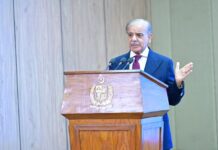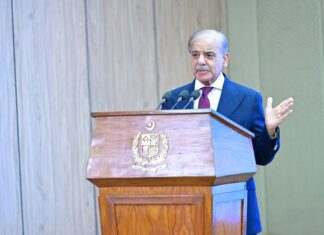KARACHI: The State Bank of Pakistan (SBP) is set to hold its key interest rate at 12% on Monday, a Reuters poll showed, having paused a run of cuts at its last policy meeting to the surprise of market watchers due to geopolitical tension and outlook for inflation.
The bank’s Monetary Policy Committee will meet in the shadow of an attack in occupied Kashmir region last week in which gunmen killed 26 mostly Indian tourists.
Pakistan has said it has “credible intelligence” that India plans to respond with military action. India has said only that it will pursue and punish the attackers.
Since the attack on April 23, the spread between Pakistan and U.S. debt has widened nearly 200 basis points to more than 850 bps, meaning Pakistan’s cost of borrowing has increased.
In a poll of 14 analysts and investors, nine said they expected the SBP to hold its policy rate. Three said they expected a 50 bps cut and two called for a 100 bps cut.
The bank had cut the rate by 1,000 basis points since June from an all-time high of 22% before holding it in March, citing the risk of price rises including from increased U.S. tariffs.
Still, analysts expect the SBP to resume cuts this year to encourage lending and stimulate economic growth.
For now, the SBP will likely maintain a wait-and-see approach due to a fluid trade picture, persistent core inflation and an upcoming International Monetary Fund review, said S& P Global Market Intelligence senior economist Ahmad Mobeen.
The IMF will review a $7 billion bailout loan programme on May 9 and decide whether to disburse the first $1 billion. It will also discuss a new $1.3 billion climate resilience loan.
The inflation rate fell to 0.7% in March, its lowest in nearly a decade. The Ministry of Finance pegs April inflation at 1.5% to 2% and the central bank forecasts average inflation to be in the range of 5.5% to 7.5% for the fiscal year ending June.
A “measured” cut on Monday could support economic recovery without undermining stability given the large gap between interest rates and inflation, and “improving but vulnerable external accounts”, said Sana Tawfik, head of research at brokerage Arif Habib.
Increased foreign exchange reserves – ideally to the central bank target of $14 billion in June – are necessary before resuming monetary easing, said Al Meezan Investments head of research Amreen Soorani. The current $10.5 billion covers imports for less than two months.























